-
Does Private Equity Ownership Make Firms Cleaner? The Role of Environmental Liability Risks Rev. Financ. Stud. (IF 6.8) Pub Date : 2025-06-02
Aymeric BellonThis paper shows that private equity (PE) ownership, in private-to-private buyouts, leads to a reduction in pollution when the target company faces high potential liabilities for polluting. Conversely, PE-backed firms increase pollution when environmental liability risks are low, as shown by a novel natural experiment that reduced these risks for projects located on federal land. Exploiting specific
-
What Is the Cost of Privatization for Workers? J. Financ. (IF 7.6) Pub Date : 2025-05-31
MARTIN OLSSON, JOACIM TÅGPrivatization of state‐owned enterprises is on the agenda across the globe. Using Swedish data covering two decades, we show that productivity gains and headcount reductions are associated with economic costs for incumbent workers. Workers experience income losses and higher unemployment, but half of the losses are covered by the social safety net. We also find small positive effects on entrepreneurship
-
How CEO donations drive stock prices: Evidence from the Trump 2024 election Finance Research Letters (IF 7.4) Pub Date : 2025-05-31
Dennis Koch, Dirk SchiereckThis study examines the impact of CEO political support on the market valuation of Russell 3000 firms following the 2024 U.S. presidential election. Using event study methodology and federal donations data, we find that both the relative share and absolute amount of CEO donations to the Republican Party positively relate to abnormal stock returns post-election, while Democratic support results in significant
-
Regulating Over‐the‐Counter Markets J. Financ. (IF 7.6) Pub Date : 2025-05-30
TOMY LEE, CHAOJUN WANGOver‐the‐counter (OTC) trading thrives despite competition from exchanges. We let OTC dealers cream skim from exchanges in an otherwise standard Glosten and Milgrom framework. Restricting the dealer's ability to cream skim induces “cheap substitution”: some traders exit while others with larger gains from trade enter. Cheap substitution implies trading costs, trade volumes, and market shares are poor
-
An Intermediation-Based Model of Exchange Rates Rev. Financ. Stud. (IF 6.8) Pub Date : 2025-05-30
Semyon Malamud, Andreas Schrimpf, Yuan ZhangWe develop a continuous-time general equilibrium model with intermediaries at the heart of international financial markets. Global intermediaries bargain with households and extract rents from providing access to foreign claims. By tilting state prices, intermediaries’ market power breaks monetary neutrality and makes international risk-sharing inefficient. Despite having zero net positions, markups
-
Too Levered for Pigou: Carbon pricing, financial constraints, and leverage regulation J. Financ. Econ. (IF 10.4) Pub Date : 2025-05-29
Robin Döttling, Magdalena Rola-JanickaWe analyze optimal carbon pricing under financial constraints and endogenous climate-related transition and physical costs. The socially optimal emissions tax may be above or below a Pigouvian benchmark, depending on the strength of physical climate impacts on pledgeable resources. We derive necessary conditions for emissions taxes alone to implement a constrained-efficient allocation, and show a cap-and-trade
-
Signal received? Carbon price and financial–environmental performance prioritization in EU ETS firms International Review of Financial Analysis (IF 7.5) Pub Date : 2025-05-29
Ethan Eslahi, Anna Creti, María-Eugenia SaninUnderstanding how firms interpret and respond to carbon price signals based on their strategic priorities is crucial for aligning climate policies with corporate financial and environmental objectives. We propose a novel composite financial–environmental performance index that adjusts the emphasis on each dimension. Using a machine learning model, we evaluate the sensitivity of this index to carbon
-
The Value of Bank Lending J. Financ. (IF 7.6) Pub Date : 2025-05-28
THOMAS FLANAGANUsing a novel data set of realized syndicated loan cash flows and a risk‐adjustment methodology adapted from the private equity literature, I provide a measure of risk‐adjusted returns for bank loan cash flows. Banks, on average, generate 180 basis points in gross risk‐adjusted returns and add $75 million of value annually to their loan portfolios. Banks earn higher returns when they lend to financially
-
The Term Structure of Interest Rates in a Heterogeneous Monetary Union J. Financ. (IF 7.6) Pub Date : 2025-05-28
JAMES COSTAIN, GALO NUÑO, CARLOS THOMASWe build an arbitrage‐based model of the yield curves in a heterogeneous monetary union with sovereign default risk, which accounts for the asymmetric shifts in euro‐area yields during the Covid‐19 pandemic. We derive an affine term structure solution, and decompose yields into expectations, term premium, expected default loss, and credit risk premium components. In an extension, we endogenize the
-
Interlocking Directorates and Competition in Banking J. Financ. (IF 7.6) Pub Date : 2025-05-28
GUGLIELMO BARONE, FABIANO SCHIVARDI, ENRICO SETTEWe study the effects on corporate loan rates of an unexpected change in the Italian legislation that forbade interlocking directorates between banks. Exploiting multiple firm‐bank relationships to fully account for all unobserved heterogeneity, we find that prohibiting interlocks decreased the interest rates of previously interlocked banks by 14 basis points relative to other banks. The effect is stronger
-
The Signaling Value of Internal Employee Coordination Journal of Accounting Research (IF 4.9) Pub Date : 2025-05-28
WEI CAI, DENNIS CAMPBELL, JIEHANG YUWe examine the effect of internal employee coordination on customer trust, focusing specifically on employees’ responsiveness to each other as an important, quantifiable, and objective aspect of internal coordination. Using proprietary data from a company with exogenous assignment of employees to teams that serve individual customers, we study how inter‐employee responsiveness influences customer trust
-
Economic links from bonds and cross-stock return predictability J. Financ. Econ. (IF 10.4) Pub Date : 2025-05-27
Jian Feng, Xiaolin Huo, Xin Liu, Yifei Mao, Hong XiangIdentifying firms’ bond-market-specific economic links through credit-rating comovement of their corporate bonds, a long-short strategy for stocks based on these links generates a risk-adjusted alpha of 0.45% per month, which cannot be explained by existing economic links in the literature. Market segmentation between the equity and bond markets appears to be the underlying mechanism: (i) The cross-return
-
Conditional risk and the pricing kernel J. Financ. Econ. (IF 10.4) Pub Date : 2025-05-27
David Schreindorfer, Tobias SichertWe propose a statistical methodology for jointly estimating the pricing kernel and conditional physical return densities from option prices. Pricing kernel estimates show that negative stock market returns are significantly more painful to investors in low-volatility periods. Density estimates reflect a significantly positive risk–return trade-off, suggest that Martin’s (2017) lower bound on the equity
-
CRISK: Measuring the climate risk exposure of the financial system J. Financ. Econ. (IF 10.4) Pub Date : 2025-05-27
Hyeyoon Jung, Robert F. Engle, Richard BernerWe develop a market-based methodology to assess banks’ resilience to climate-related risks and study the climate-related risk exposure of large global banks. We introduce a new measure, CRISK, which is the expected capital shortfall of a bank in a climate stress scenario. To estimate CRISK, we construct climate risk factors and dynamically measure banks’ stock return sensitivity (that is, climate beta)
-
Surviving the fintech disruption J. Financ. Econ. (IF 10.4) Pub Date : 2025-05-27
Wei Jiang, Yuehua Tang, Rachel J. Xiao, Vincent YaoWe examine the impact of fintech on firm labor demand, job turnover, and firm performance. Occupations with higher exposure to fintech experience a net decline in job postings and employment, though both complementary and substitutive effects emerge across different sectors. Fintech blurs traditional industry boundaries, creating demand for workers with a combination of finance and technology skills
-
Fast and Slow Arbitrage: The Predictive Power of (Persistent) Capital Flows for Factor Returns Rev. Financ. Stud. (IF 6.8) Pub Date : 2025-05-27
Xi Dong, Namho Kang, Joel PeressWe document that persistent aggregate capital flows to hedge and mutual funds predict monthly factor returns with an out-of-sample R 2 reaching 6.6%. Transient flows display no such power despite being more predictable. We show—both empirically and theoretically—that persistent flows’ predictive power stems from active fund managers’ capital constraints. Consequently, managers invest persistent but
-
The economics of “Buy Now, Pay Later”: A merchant’s perspective J. Financ. Econ. (IF 10.4) Pub Date : 2025-05-26
Tobias Berg, Valentin Burg, Jan Keil, Manju Puri“Buy Now, Pay Later” (BNPL) is a key innovation in consumer payments. It bundles the sale of a product with a subsidized loan, effectively offering lower prices to low-creditworthiness customers. BNPL thereby allows merchants to price-discriminate among customers with different willingness-to-pay. Consistent with a price-discrimination mechanism, we show that BNPL increases sales by 20%, driven by
-
Differential access to dark markets and execution outcomes J. Financ. Econ. (IF 10.4) Pub Date : 2025-05-26
James Brugler, Carole Comerton-FordeDark pools can restrict access for specific trader types. We compare execution outcomes between dark pools that restrict high frequency trader access and those that do not. We find that trades executed in dark pools with more access restrictions have less order flow information leakage, adverse selection risk and post-trade order imbalances than trades in less restricted pools. Evidence from exogenous
-
Printing away the mortgages: Fiscal inflation and the post-covid boom J. Financ. Econ. (IF 10.4) Pub Date : 2025-05-26
William Diamond, Tim Landvoigt, Germán Sánchez SánchezWe analyze interactions between fiscal and monetary stimulus in a new Keynesian model with nominal mortgage debt that can be inflated away. Redistributive transfers are most impactful when followed by a temporary deviation from inflation-targeting monetary policy. Unlike other fiscal policies, redistribution causes inflation even in the absence of long-run debt sustainability problems, and inflating
-
Private equity in the hospital industry J. Financ. Econ. (IF 10.4) Pub Date : 2025-05-26
Janet Gao, Yongseok Kim, Merih SevilirWe examine the survival prospects, employment profiles, and patient outcomes at private equity (PE)-acquired hospitals. Target hospitals maintain their survival rates while significantly reducing employment and wage expenditures. The number of core medical workers drops temporarily, but returns to its pre-acquisition level in the long run. However, administrative job and wage cuts persist over the
-
The impact of prices on analyst cash flow expectations: Reconciling subjective beliefs data with rational discount rate variation J. Financ. Econ. (IF 10.4) Pub Date : 2025-05-26
Aditya ChaudhryI show that prices impact analyst cash flow expectations and argue this impact can partially reconcile subjective beliefs data with asset pricing models in which investors have rational expectations and discount rate variation drives prices. Previous work argues that correlations of biased analyst cash flow expectations with prices and future returns contradict rational models and imply biased investor
-
Generative AI usage among investor types: The role of personality and perceptions Finance Research Letters (IF 7.4) Pub Date : 2025-05-26
Ji Luo, Qingning Cao, Shuguang Zhang, Dongxiao GuThis study investigates the factors influencing the frequency of generative AI usage among 315 investors, categorized into three groups: stock-only, crypto-only, and diversified. Through surveys and regression analyses, we explore how investment type, personality traits, and perceptions of AI affect adoption. The results reveal that diversified investors use AI most frequently. Narcissism and perceived
-
Spillover effects between climate policy uncertainty, energy markets, and food markets: A time–frequency analysis Finance Research Letters (IF 7.4) Pub Date : 2025-05-26
Ting Zhang, Peng-Fei Li, Wei-Xing ZhouThe study examines the return connectedness between climate policy uncertainty (CPU), clean energy, fossil energy, and food markets. Using the time-domain method of Diebold and Yilmaz, (2012) and frequency-domain methods of Baruník and Křhlík (2018), we find substantial spillover effects between these markets. Furthermore, high frequency domain is the primary driver of overall connectedness. In addition
-
Bank stress testing, human capital investment and risk management J. Financ. Econ. (IF 10.4) Pub Date : 2025-05-24
Thomas Schneider, Philip E. Strahan, Jun YangThis paper studies banks’ investment in risk management human capital following the Global Financial Crisis and the advent of stress testing. Our results suggest that ‘Too Big to Fail’ distortions may have weakened large banks’ incentive to invest in risk management talent. Stress testing, which focuses on the largest banks, spurred demand for skilled quantitative risk managers, but only narrowly in
-
Emerging trends in ESG ratings as risk factors in asset pricing Finance Research Letters (IF 7.4) Pub Date : 2025-05-24
Nihal Touti, Asmâa Alaoui Taïb, Lilia RekikThe increasing prominence of ESG ratings is reshaping asset pricing by providing new approaches to assess risk and return in financial markets. This study conducts a bibliometric analysis of 392 publications from Scopus and Web of Science, covering research from 2005 to 2024. A notable acceleration in studies has been observed since 2018, with the USA and UK leading in contributions. The analysis identifies
-
Energy, metals, cereals and G7 indices: Russia–Ukraine conflict and risk spillovers Finance Research Letters (IF 7.4) Pub Date : 2025-05-24
Maria Leone, Alberto Manelli, Roberta PaceThe economies of each State are increasingly interconnected and depend on international trade. The intricate set of connections and transactions was put to the test during the Russia–Ukraine conflict. The TVP-VAR model is used to investigate the connectedness among G7 stock indices and commodity markets. Results show that spillovers are dynamic and crisis sensitive and the response at the war has been
-
Impact of inclusive innovation on firm performance Finance Research Letters (IF 7.4) Pub Date : 2025-05-23
LinBai Li, BeiWei LiThis study examines the relationship between inclusive innovation and firm performance through the lens of social network theory. Empirical analysis reveals that inclusive innovation positively influences firm performance through three mediating mechanisms, namely, firm-rooted ability, social embeddedness, and value co-creation. This study identifies critical boundary conditions—the uniqueness of base-of-the-pyramid
-
Non-response bias in expectation surveys: Different perceptions and expectations of financial matters from “early quitters” Finance Research Letters (IF 7.4) Pub Date : 2025-05-22
Ruichen HuangThis study demonstrates that non-response bias drives selective sample attrition in expectation surveys that require consecutive household responses. Examining 160,842 responses from 20,963 respondents in the Survey of Consumer Expectations (SCE) from June 2013 to April 2024, I show that 66.1 % of respondents who quit the consecutive survey before the completion of 12 tenures—the early quitters—only
-
When geopolitical risks hit the supply chain: Impacts on credit default swap market Finance Research Letters (IF 7.4) Pub Date : 2025-05-22
Yin-Siang HuangThis study examines the impact of cost-weighted geopolitical risk exposure in the supply chains of U.S. firms. Using a Difference-in-Differences (DiD) framework centered on the Russo-Ukrainian War, we find that treated firms experience a significant increase in credit default swap (CDS) spreads. In addition, these firms exhibit higher default probabilities and lower credit ratings, reflecting heightened
-
The impact of wildfire smoke on carbon-intensive stocks Finance Research Letters (IF 7.4) Pub Date : 2025-05-22
Tatiana SalikhovaWe show that carbon-intensive firms experienced significant negative cumulative abnormal returns when the historically unprecedented haze from Canadian wildfires reached the New York City area in June 2023. Our findings cannot be explained by energy price shocks, negative productivity effects of air pollution, aversion to highly polluting industries, or concurrent political events. Our results indicate
-
Where to draw the line in prudential policy? Insights into banking stability and risk tolerance Finance Research Letters (IF 7.4) Pub Date : 2025-05-22
Petr Jakubik, Bogdan Gabriel MoinescuThis study estimates the natural rate of bank defaults, the threshold below which systemic banking crises are unlikely, using a threshold model based on bank default rates and macroeconomic indicators. Analyzing global data from major crises over the past 40 years, we identify a critical default rate of 0.25 %, equivalent to one default per 400 banks annually. Aligned with a 'BBB' rating, this benchmark
-
Greenium fluctuations and climate awareness in the corporate bond market International Review of Financial Analysis (IF 7.5) Pub Date : 2025-05-21
Massimo Dragotto, Alfonso Dufour, Simone VarottoThis study offers a novel explanation for the dynamics of the ‘greenium,’ that is the negative yield differential of corporate green bonds relative to equivalent conventional bonds. Utilising a matched dataset of green and conventional corporate bonds from January 2014 to July 2022, we find that the ‘greenium’ in the secondary market responds significantly, even if briefly, to climate policy events
-
The attention of the Fed Finance Research Letters (IF 7.4) Pub Date : 2025-05-21
Nathan GoldsteinThis paper proposes a simple measure of the Fed's inattention to incoming information, based on the persistence of disagreement between the Fed and professional forecasters. I document a substantial degree of persistent disagreement over time and across variables, typically exceeding half. At a short horizon, there is also evidence of a significant attention advantage of the Fed over professional forecasters
-
Learning to Disclose: Disclosure Dynamics in the 1890s Streetcar Industry Rev. Financ. Stud. (IF 6.8) Pub Date : 2025-05-21
Thomas Bourveau, Matthias Breuer, Robert StoumbosWe study the influence of bounded rationality on companies’ disclosure to investors in new industries. Using a historical example of a new industry, we document that several companies initially withheld their earnings, despite external capital needs and investor information demands. However, almost all these companies started disclosing shortly thereafter. Interpreted through the lens of a disclosure
-
When green turns red: Is the perception of greenwashing a barrier to individual green investment? Finance Research Letters (IF 7.4) Pub Date : 2025-05-20
Syrine Gacem, Fabrice Hervé, Sylvain MarsatBased on a survey of 2215 French investors, this study examines the impact of greenwashing perception on individual investment decisions. Our findings reveal that greenwashing perception is negatively related to green investing. Specifically, A one-point increase in greenwashing reduces investment likelihood by 1.68 percentage points. This perception discourages traditional investors from considering
-
Corporate credit ratings, banking fragility, and sovereign credit risk Finance Research Letters (IF 7.4) Pub Date : 2025-05-20
Patricio ValenzuelaUsing corporate credit rating data and a new metric of the expected joint loss of the banking sector conditional on a systemic event (JLoss), this study documents a positive association between corporate credit risk and domestic banking fragility. It also documents that the relationship between corporate and sovereign credit ratings amplifies during periods of banking distress.
-
Can sustainability-linked lending reconcile environmental and financial motives? International Review of Financial Analysis (IF 7.5) Pub Date : 2025-05-19
Ammu George, Jingong Huang, He Nie, Taojun XieDifferentiated lending terms for clean and dirty capital have become a popular tool among commercial banks as they promote themselves as advocates of environmental sustainability. Using a two-sector New Keynesian Dynamic Stochastic General Equilibrium (DSGE) model where emissions are a by-product of dirty capital, we incorporate an interest spread responding elastically to carbon emissions: Banks offer
-
Monetary policy and oil volatility smirk International Review of Financial Analysis (IF 7.5) Pub Date : 2025-05-19
Yuan Tian, Junzhu Zhao, Fang ZhenThis paper investigates the transmission of U.S. monetary policy shocks to oil market dynamics, focusing on oil price uncertainty and tail risks. Using a structural VAR model, we reveal that tight monetary policy induces a sustained increase in oil market uncertainty while reducing left-tail risk, as hedgers exhibit diminished concern over extreme downside risks. In contrast, the impact on right-tail
-
Building an index based on key SDG 12 indicators to promote the transition to a circular economy Finance Research Letters (IF 7.4) Pub Date : 2025-05-19
Javier Cifuentes-FauraThe United Nations 2030 Agenda promotes sustainability through 17 Sustainable Development Goals (SDGs). In this study, an index based on key SDG 12 indicators related to responsible consumption and production patterns is constructed to rank EU countries according to their level of compliance. The results show that Italy, the Netherlands and France leading the implementation of sustainable practices
-
Stock portfolio selection based on risk appetite: Evidence from ChatGPT Finance Research Letters (IF 7.4) Pub Date : 2025-05-19
Constantin J. Schneider, Yahya YilmazWe analyze whether a large language model can generate investment portfolios with varying risk appetites and evaluate their performance against benchmarks. We prompt different ChatGPT models to create portfolios for different risk appetites of retail investors, focusing on U.S. and European equity markets. Our study reveals that higher-risk portfolios yield higher returns. GPT-4o outperforms in the
-
Punish one, teach a hundred: The impact of punishments on ex-post misconduct of unpunished firms International Review of Financial Analysis (IF 7.5) Pub Date : 2025-05-18
Zhen Chen, Xudong Tang, Yanying Wangwe examine whether regulatory punishments imposed on a firm affect the behavior of other firms that have not been punished previously but share cross-ownership with the former. We find that when a firm's cross-firm is punished, the probability of that firm engaging in misconduct decreases significantly in the subsequent year, suggesting that the punishment event generates a spillover effect. Our findings
-
Fintech development and corporate hypocrisy: Evidence from social responsibility decoupling Finance Research Letters (IF 7.4) Pub Date : 2025-05-18
Xi Chen, Fei Ji, Dongmin Kong, Zitong TanThis paper empirically examines the impact of fintech on the decoupling behavior of corporate social responsibility (CSR). The results show that the fintech increases CSR decoupling by promoting corporate violations and enhancing risk-taking behaviors. Further analysis shows that the influence of fintech on CSR decoupling is more pronounced in firms operating within highly legal environments and highly
-
Liquidity picking and fund performance J. Financ. Econ. (IF 10.4) Pub Date : 2025-05-17
Feng Jiao, Sergei Sarkissian, David SchumacherUsing global mutual fund and American Depositary Receipt (ADR) data, we test if funds strategically trade cross-listed firms’ equity shares in the most liquid trading location. We find that especially funds that score high on traditional skill measures exhibit a liquidity-based trading venue preference. We identify an informed trading motive as the most likely driver for such behaviour rather than
-
Robust difference-in-differences analysis when there is a term structure J. Financ. Econ. (IF 10.4) Pub Date : 2025-05-17
Kjell G. Nyborg, Jiri WoschitzFor variables with a term structure, the standard difference-in-differences (DiD) model is predisposed toward misspecification, even under random assignment, because of heterogeneity over the maturity spectrum and imperfect matching between treated and control units. Estimated treatment effects that are false, biased, or hard to interpret become a concern. Neither unit fixed effects nor standard term-structure
-
Asset allocation for a DC pension plan with dynamic attention Finance Research Letters (IF 7.4) Pub Date : 2025-05-17
Xingchun Peng, Shiqi FanWe investigate the optimal investment and dynamic attention allocation strategies of DC pension plan. The market price of stock risk is an affine function of observable and unobservable factors. The fund manager can acquire news signal to improve the predictability of stock returns with costs. The optimal strategies are derived explicitly. Through numerical analysis, we find that if the fund manager
-
Steering a Ship in Illiquid Waters: Active Management of Passive Funds Rev. Financ. Stud. (IF 6.8) Pub Date : 2025-05-17
Naz Koont, Yiming Ma, Lubos Pastor, Yao ZengExchange-traded funds (ETFs) are typically viewed as passive index trackers. In contrast, we show that corporate bond ETFs actively manage their portfolios, trading off index tracking against liquidity transformation. In our model, ETFs optimally choose creation and redemption baskets that include cash and only a subset of index assets, especially if those assets are illiquid. Our evidence supports
-
Government subsidies, economic policy uncertainty and corporate financialization International Review of Financial Analysis (IF 7.5) Pub Date : 2025-05-16
Meijie Yao, Wei ChenThis study focuses on A-share listed companies from 2012 to 2023, aiming to analyze the impact of government subsidies on corporate financialization and the moderating role of economic policy uncertainty. The empirical results show that government subsidies significantly inhibit corporate financialization, while economic policy uncertainty amplifies this inhibitory effect. Specifically, when economic
-
Shockwaves across borders: Did the 2023 banking crisis reshape global banking sector linkages? Finance Research Letters (IF 7.4) Pub Date : 2025-05-16
Chun-Sung Huang, Ailie CharterisWe investigate the impact of the 2023 banking crisis, the most significant banking system turmoil since the Global Financial Crisis (GFC), on co-movement between the United States (U.S.) and global banking sectors. Using wavelet coherence and beta regressions, we find strong contagion during the crisis. The crisis primarily impacted co-movement through a change in U.S. monetary policy and heightened
-
Investment opportunities and labor mobility: Evidence from Europe Finance Research Letters (IF 7.4) Pub Date : 2025-05-16
Stanley PeterburgskyWe study the relationship between country-level investment opportunities and international labor mobility in Europe. Based on a gravity model analogous to those frequently utilized in the international trade literature, we find that (1) migration is not sensitive to investment opportunities at home and (2) individuals who migrate are more likely to move to countries with higher investment opportunities
-
From whales to waves: Social media sentiment, volatility, and whales in cryptocurrency markets The British Accounting Review (IF 5.5) Pub Date : 2025-05-16
Suwan(Cheng) Long, Ying Xie, Zhengyuan Zhou, Brian Lucey, Andrew UrquhartThis paper examines the relationship between cryptocurrency market dynamics and investor sentiment, employing advanced techniques like time-variant Granger causality and asymmetric time-varying parameter vector autoregression (TVP-VAR) frequency connectivity. We create unique sentiment analysis tools, including a custom cryptocurrency sentiment lexicon, to deeply analyze content in the cryptocurrency
-
Exorbitant privilege? Quantitative easing and the bond market subsidy of prospective fallen angels J. Financ. Econ. (IF 10.4) Pub Date : 2025-05-15
Viral V. Acharya, Ryan Banerjee, Matteo Crosignani, Tim Eisert, Renée SpigtWe document capital misallocation in the U.S. investment-grade (IG) corporate bond market, driven by quantitative easing (QE). Prospective fallen angels — risky firms just above the IG cutoff — enjoyed subsidized bond financing in 2009–19. This effect is driven by Fed purchases of securities inducing long-duration IG-focused investors to rebalance their portfolios towards higher-yielding IG bonds.
-
Bank information rents and loan pricing: How U.S. banks extract higher spreads than European banks International Review of Financial Analysis (IF 7.5) Pub Date : 2025-05-15
Xiaodan Li, Run-Chuan Qin, Wei-Zhong Shi, Min-Teh YuThis paper investigates the global loan pricing puzzle, focusing on the significantly higher interest rate spreads in the U.S. compared to the European market. Using syndicated loan data from U.S. and European firms between 1992 and 2014, we find that bank information rents are the primary driver behind this disparity. U.S. banks leverage their informational advantages to extract higher borrowing costs
-
CEO war trauma and corporate tax avoidance International Review of Financial Analysis (IF 7.5) Pub Date : 2025-05-15
Seunghyun Cho, Jinhan Pae, Choong-Yuel YooThis paper investigates the impact of CEOs' traumatic experiences on corporate tax avoidance. Using CEOs who experienced the Korean War, we find that firms led by war-traumatized CEOs exhibit lower levels of tax avoidance than those led by non-traumatized CEOs. Our results are robust to controlling for managerial characteristics, such as CEO age, education, and stock ownership, and to the applications
-
The financial life cycle of European SMEs before, during and after crisis periods. What is the role of a country's financial system? International Review of Financial Analysis (IF 7.5) Pub Date : 2025-05-15
Maurizio La Rocca, Francesco Fasano, Raffaele Staglianò, Elvira Tiziana La Rocca, Marc DeloofThis paper contributes to the financial life cycle literature by studying the effect of firm age on SMEs' debt policies, focusing for the first time on a multi-country context comprising 28 European countries. It also examines, in a novel way, whether this effect is influenced by periods of economic crisis, and in particular whether the global financial crisis and the European sovereign debt crisis
-
Modelling CSRBB under regulatory guidelines Finance Research Letters (IF 7.4) Pub Date : 2025-05-15
Maxime Segal, Kristján Rúnar Kristjánsson, Björn Hrannar BjörnssonThe European Banking Authority (EBA) provides limited standardization for Credit Spread Risk in the Banking Book (CSRBB), delegating its assessment to individual financial institutions. This has led to significant variation in how CSRBB guidelines are interpreted and applied across the banking sector. This study investigates how to model plausible but unlikely credit spread shocks using Principal Component
-
Would Order‐By‐Order Auctions Be Competitive? J. Financ. (IF 7.6) Pub Date : 2025-05-14
THOMAS ERNST, CHESTER SPATT, JIAN SUNWe model two methods of executing segregated retail orders: brokers' routing, whereby brokers allocate orders using the market maker's overall performance, and order‐by‐order auctions, where market makers bid on individual orders, a recent U.S. Securities and Exchange Commission proposal. Order‐by‐order auctions improve allocative efficiency, but face a winner's curse reducing retail investor welfare
-
AMERICAN FINANCE ASSOCIATION J. Financ. (IF 7.6) Pub Date : 2025-05-14
Click on the article title to read more.
-
ISSUE INFORMATION J. Financ. (IF 7.6) Pub Date : 2025-05-14
Click on the article title to read more.
-
Do major corporate customers deter supplier misconduct? J. Account. Econ. (IF 5.4) Pub Date : 2025-05-14
Jie Chen, Xunhua Su, Xuan Tian, Bin Xu, Luo ZuoWe examine whether major corporate customers can deter misconduct among their suppliers. Our findings indicate that firms with concentrated customer bases are less likely to commit misconduct and face lower penalties in equilibrium. We also observe a significant decline in supplier misconduct following the establishment of a major customer relationship. Furthermore, the deterrent effect of major customers
-
Entrepreneurial spillovers across coworkers J. Financ. Econ. (IF 10.4) Pub Date : 2025-05-13
Melanie WallskogHow do workplace social connections shape everyday entrepreneurship? Using comprehensive data on millions of American workers across the economy, I find three key patterns. First, entrepreneurial coworkers inspire and teach entrepreneurship: individuals are more likely to become entrepreneurs after working with coworkers who previously led young businesses. Second, these effects predominantly occur














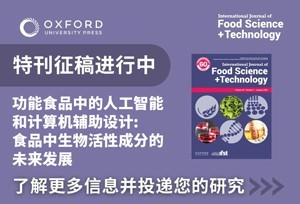







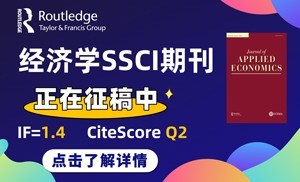




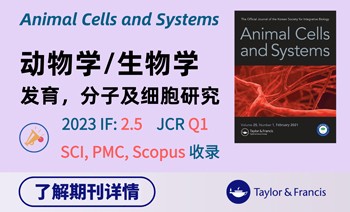


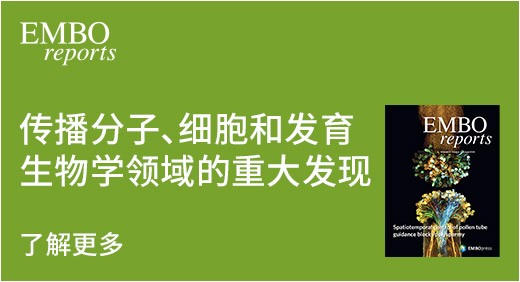
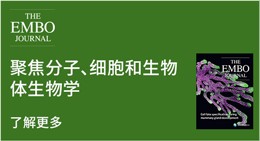





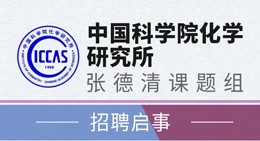


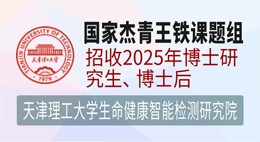









 京公网安备 11010802027423号
京公网安备 11010802027423号